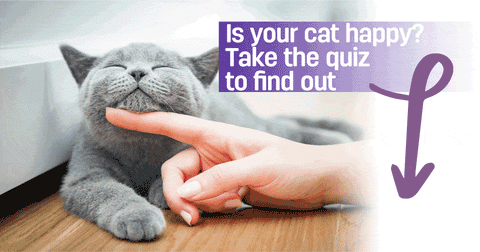
Does My Cat Need Extra Support in Winter? 14 Tips for Safe and Cosy Cats
As we approach the winter months, we start to prepare ourselves and our home for cold temperatures by blocking up draughts, preparing warm food and getting out our warm clothes. But what about our feline friends? Despite having a furry coat, they will undoubtedly feel the cold too, so we need to give them extra support in winter to help them cope.
According to a global study by Nottingham Trent University in 2021, almost 50% of cats are kept indoors, mainly because their owners were concerned about traffic, people and other wildlife.
But winter temperatures bring added risks for all of our cats.Winter risks for outdoor cats
Our feline friends love warm spots and we will often find them basking in the sun, lying on the sun-drenched window sill, or curled up in a cosy spot in a cupboard. But in winter, they will still try to find warm spots to curl up in when they are outdoors, which can be dangerous.
- Car bonnets. How often have you spotted tell-tale paw prints on the bonnet of your car? Cats will frequently take advantage of the warmth coming from a car engine by laying on the bonnet, or even curl up behind warm, recently driven tyres. Before getting into your car and driving off, always check for dozing kitties.
- Antifreeze. We use antifreeze (ethylene glycol) in car radiators and screen wash in the winter. Unfortunately, cats love the taste of antifreeze, but this can be fatal to them if ingested. It is also often used in garden ponds and water features to stop them freezing over.
Clean up any spills straight away and get in touch with your vet if you think your cat may have ingested or been exposed to any antifreeze, as it can quickly damage their kidneys (signs include vomiting, lethargy and seeming uncoordinated).
- Road salt and grit. Always check your cat's paws when they come indoors during winter months. Wiping them to remove any salt/chemicals will avoid your cat ingesting anything dangerous when they groom themselves.
- Reduced visibility. Did you know, cats only need one-sixth of the amount of light that humans do, so can see in very low light (but not complete darkness!) compared to us. Cats are able to see in low light by dilating their eyes widely - but this results in blurrier vision. So if a car's headlights suddenly come into view, this can be dazzling and disorientating.
Support your cat in winter by:
- Encouraging them to come indoors earlier than in the summer months.
- As winter approaches, bring forward their meal times to coincide with rush hour.
- Ensuring they wear a fluorescent collar to make them more visible, but check that this is a quick release to avoid your cat being stuck if the collar gets snagged.
Winter risks for indoor cats
Although you may think that your cat is happy when they are tucked up and cosy indoors, there are considerations to ensure your cat's safety.
- Boredom: There's only so much snoozing a cat can do! Your indoor cat needs to be kept active and have plenty of exercise, both physically and mentally. Look out for signs that your cat is bored
- Are they over-grooming, resulting in chewing or biting their skin?
- Are they fighting with other cats or pets?
- Are they looking glum, with no interest in food or playtime?
- Are they overeating, because there's nothing else to do?
If you think boredom is an issue, you should enhance their environment with stimulating activities/toys/cat trees and build in more playtime with them.
- Indoor plants: Although indoor plants are excellent for our mental wellbeing, not all of them are safe for our kitties. We know that our cats love to explore, scratch and chew but some indoor plants are unsafe for kitties. Avoid having these plants indoors:
- cycads
- cheese plants
- aloe vera
- seasonal plants like mistletoe and poinsettia are also dangerous.
The UK charity, Cats Protection have pulled together a useful and extensive list of plants that are 'Toxic', 'Caution Advised' or 'Safe' for cats. Find it here in this What Cat Friendly Plants can I have in my Home? blog.
- Dangerous hiding places. Cats are great at finding places to hide, after all, hiding is in their genes! But some hiding places can also be dangerous for cats, for example:
- A washing machine or clothes dryer. Cats are masters at finding warm, cosy places, and where better than a machine that has just had a warm cycle? Not so! Your cat may have climbed inside between washes and being trapped in the next cycle could end in tragedy. Always make sure you close the door between cycles and always check the machine is void of cats before you start your next wash.
- The garage. This is where we would normally keep hazardous chemicals, but it is also a place where cats might explore looking for somewhere cosy. However, as cats like the taste of antifreeze, you should regularly check that all garage access is closed and your cat is kept out.
- Cabinets, cupboards or drawers. These are very tempting hiding places for cats, but if they get closed inadvertently, your cat could get trapped or injured. Always check your cat has not snuck in when your back was turned!
 14 tips to keep your cat safe and cozy in winter
14 tips to keep your cat safe and cozy in winter
- Even if your cat is an outdoor cat, you should give them access to an indoor litter tray, particularly in the colder weather, so they can use the toilet in comfort. Make sure you follow the guidelines:
- One litter tray per cat.
- Make it easy to access.
- Always locate it away from food and water and noisy areas (such as by a washing machine), and away from other litter trays.
- Make sure it is always clean: scooped daily and cleaned weekly. - Create a reassuring atmosphere in your home with FELIWAY Diffuser which helps bring calm and comfort to your cat in times of change, such as being indoors more than usual.
- Make sure they have easy access to their favourite draught-free spots where they like to curl up. Remember that small cats and older cats don't tolerate cold weather very well, so you may even want to create extra safe areas close to a radiator. Igloo beds or heated beds might be an option to consider, and these are particularly useful if your cat has joint pain which might be exacerbated by cold weather.
- If you are planning a weekend away, leave the heating on in the house, or at least in the room your cat frequents, so that they can stay warm and cosy while you are away.
- Don't leave your cat unsupervised where there is access to open flames, like a fire, wood burner or even candles. Protect your cat from inadvertently making contact with flames by using a fire guard over the fireplace or wood burner.
- Keep them physically and mentally active with toys and playtimes. Being active will keep them in good body shape and playing games will keep their mind alert.
- If your cat goes outside, consider providing some places for them to shelter out there, where they can stay warm and dry. This could be a cat shelter, or maybe a garden shed with a cat flap fitted. We know that cats love cardboard boxes, so one placed on its side with a blanket inside and covered with some plastic sheeting will provide some shelter, particularly if it is strategically placed where it will catch the winter sunshine.
- However, also make sure they don't get stuck somewhere when seeking a warm shelter, e.g. a garage or shed.
- Make sure your details are up to date on your cat's microchip, as they may wander off to find a warm place and become lost.
- If you have a cat flap, make sure your cat continues to be able to access this, a large snowfall may block it or ice may cause it to get stuck closed!
- If your cat goes outdoors in cold weather, they may find that their outdoor water source gets frozen, so keep plenty of fresh water available indoors for them.
- It's a good idea to keep your cat indoors at night, so they can keep warm and safe when the temperature drops and in the longer nights.
- Keep your stocks of cat food, litter and treats stocked up during winter months, just in case you are unable to get out.
- If you notice a change in your cat's behaviour, contact your vet as there may be an underlying medical reason for this, rather than it just being due to the colder weather.
























